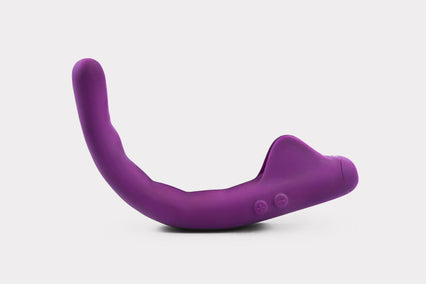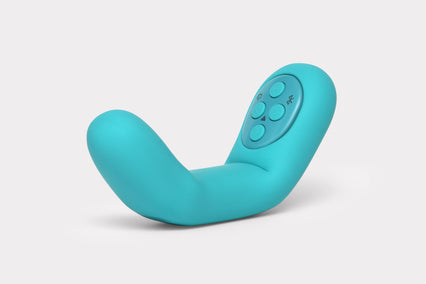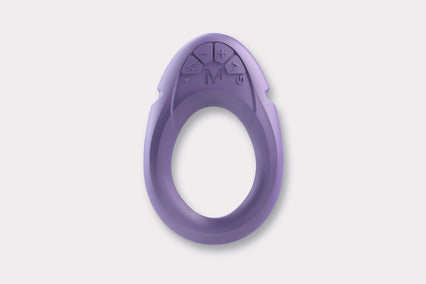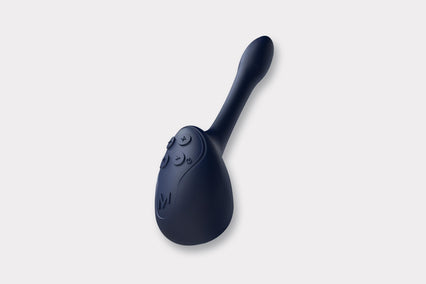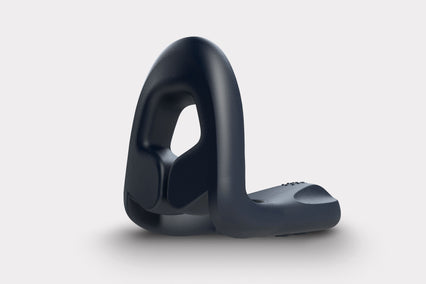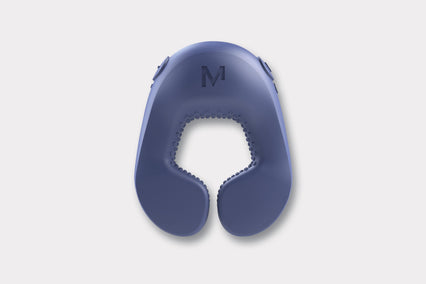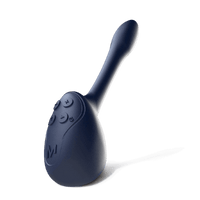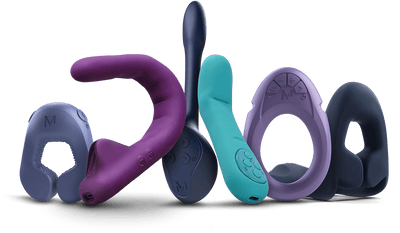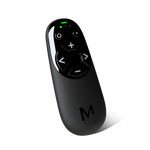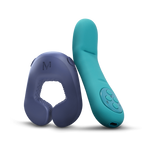How will we control our sextech in the future?
One of the key challenges for any technology product is control. Particularly items in the home, and the intimate gadgets of sextech, the holy grail for a designer is finding a way for a product to integrate seamlessly into your life — so seamless that picking it up and using it feels natural and intuitive.
And often that means you have to ditch the buttons.
Already sex toy companies are experimenting with new ways for you to control your pleasure — from sound inputs to motion sensors and much more.
Motion and pressure-sensitive vibrators
Motion controls have been around for a long time — the initial excitement about Xbox’s Kinect, where waving and hand gestures allowed you not just to play games but to navigate menu systems — are now part and parcel of many people’s lives. But with vibrator controls we’re only just beginning to explore the potential of motion control.

A motion-sensitive controller on a vibrator allows you to create your own patterns and intensities by moving and shaking the control. The harder you shake, for example, the harder the toy will vibrate inside you or a partner.
As a vibrator interface, it’s a clever idea, because it creates an intuitive link between what your hands are doing and the response. On a normal remote control you press a button, which could turn the toy up, down, on or off. Your movement is always the same. With a motion sensor, though, the vibrations directly reflect your actions, meaning there’s a lot of scope for experimentation and play. For example, one person holding the motion sensitive remote in their hand while they’re stroking the partner who is wearing the toy. Or two people both using toys but holding each others’ remotes. The direct link between movement and toy response allows for a much more intuitive — and intimate — exchange.
Pressure sensors allow for a slightly different type of control, but to similar effect, as in vibrators which allow you to control the pace and intensity of vibrations by squeezing them. The lack of buttons means they could take a bit of getting used to, but again the fact that intensity is determined by how hard you squeeze (as opposed to which buttons you press) means that there’s a direct correlation between your actions and your pleasure.
Gesture controlled vibrators
Looking ahead to the future, motion control could potentially give way to an even simpler intuitive system: gesture. The obvious advantage of gesture controls is that they negate the need for a remote. It leaves both of your hands free to pleasure your partner — and it opens up tantalising possibilities to mix sexual moves with your vibrator gesture controls.
For instance, if your partner likes being spanked, there’s nothing to stop you programming a spank as a relevant gesture into your vibrator — so each time you move your hand for a smack, the toy responds with a burst of vibration.
Vibrators that respond to sound
Aural stimulation gives even better scope for hands-free vibrator control — and potentially hands-free orgasms. There are different ways to implement it, though, each with its own challenges.
Toys which respond to the sound (or pitch) of your voice allow for a lot of varied controls and patterns, but aren’t necessarily the sexiest thing, especially if you’re more of a silent type in the bedroom. Some app-enabled sex toys attempt to solve this problem by using music as the input for vibration patterns — you choose your favourite song, and the toy will rumble in time to the music, building in intensity as the song does.
Voice commands offer an interesting possibility here too, although they’d need to be combined with pre-programmed patterns, or machine learning. Being able to tell your vibrator that you’re in the mood, or even how it should please you — ‘get me off quickly’ or ‘do it like you did last Saturday.’ It’s an interesting concept, and while you might not be able to imagine having these kind of conversations with a toy, when you look into robotics and artificial intelligence, it seems like the most reasonable — and realistic — option. Of course engineers have a lot of work to do first to make sure your robot can respond in a way that sounds natural too.
Your skin as a touchpad
Perhaps one of the most sensual options for vibrator controls lies in turning your body (or someone else’s body) into the control. Touch is, after all, intimate and sensual as well as intuitive. There are already vibrators on the market which allow you to program patterns using touch — tapping on an app screen to set the rhythm of vibration. At the kinkier end of the spectrum, electra stim toys — which run electric current through your body — can be wired so that a couple each carries one electrode and they only ‘connect’ and get the sensations at the moment they touch.
Microsoft and MIT showed off temporary skin tattoos that doubled up as control pads. Using very thin layers of gold leaf laid directly onto the skin, they’re not only functional but beautiful, and can effectively turn your skin into a touchpad. In the bedroom, this doesn’t just mean a chance to ditch the remote control, it’s also a golden opportunity to combine sexual touch and functional touch — using kisses and caresses to control your sex toys and integrate them seamlessly into your play.
It might seem strange now to think about voice-activated vibrators, or pleasure that’s controlled via metal circuits on the surface of your skin, but in reality it’s no stranger than the idea of controlling any other aspect of your life in this way. Many people are already used to switching their lights on via an app, or telling their smart watch to turn on the heating. And intuitive control is perhaps even more important when it comes to sex tech — to slide neatly into your bedroom without changing the mood.

